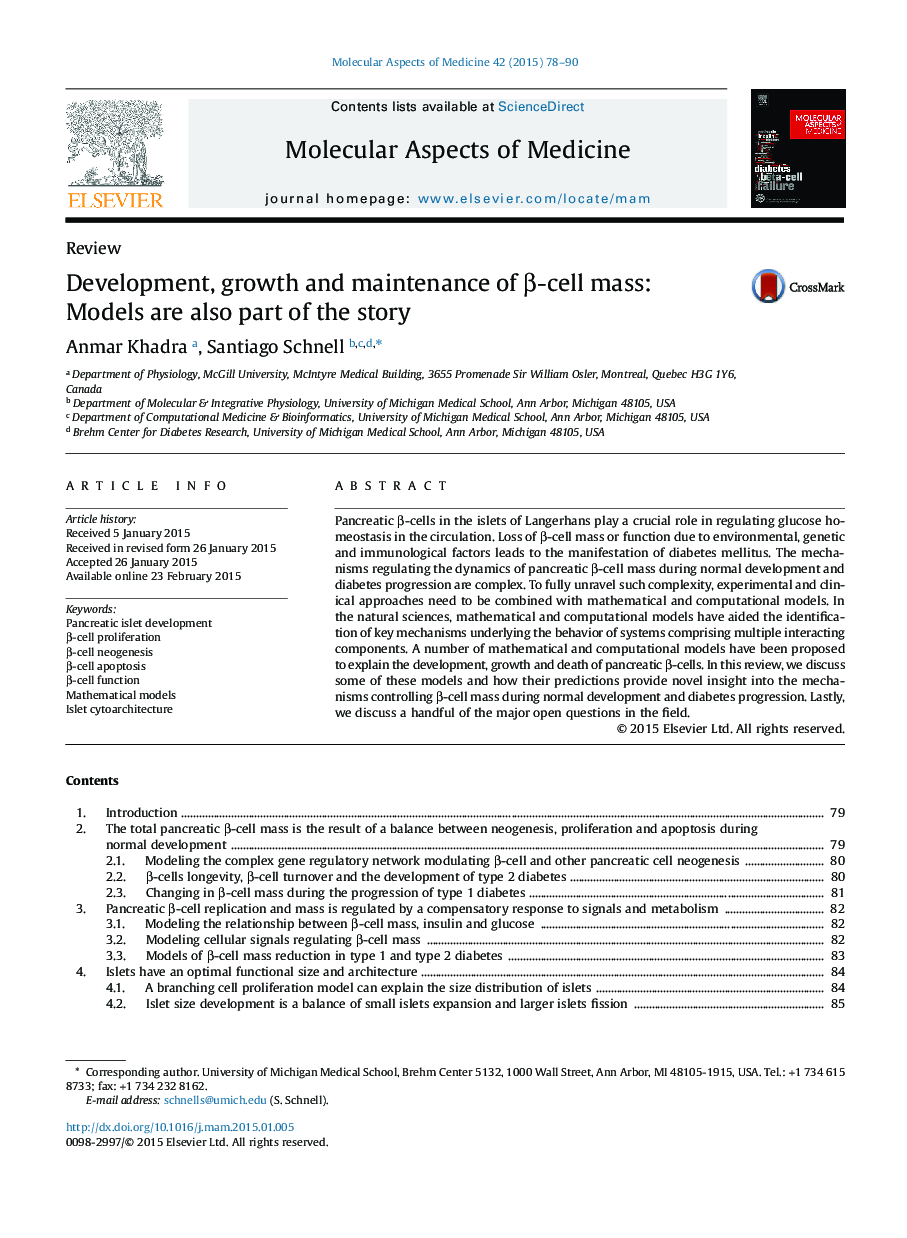| Article ID | Journal | Published Year | Pages | File Type |
|---|---|---|---|---|
| 1995581 | Molecular Aspects of Medicine | 2015 | 13 Pages |
Pancreatic β-cells in the islets of Langerhans play a crucial role in regulating glucose homeostasis in the circulation. Loss of β-cell mass or function due to environmental, genetic and immunological factors leads to the manifestation of diabetes mellitus. The mechanisms regulating the dynamics of pancreatic β-cell mass during normal development and diabetes progression are complex. To fully unravel such complexity, experimental and clinical approaches need to be combined with mathematical and computational models. In the natural sciences, mathematical and computational models have aided the identification of key mechanisms underlying the behavior of systems comprising multiple interacting components. A number of mathematical and computational models have been proposed to explain the development, growth and death of pancreatic β-cells. In this review, we discuss some of these models and how their predictions provide novel insight into the mechanisms controlling β-cell mass during normal development and diabetes progression. Lastly, we discuss a handful of the major open questions in the field.
